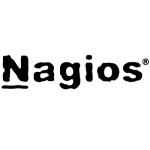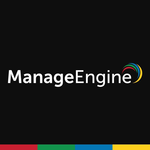What is our primary use case?
Discovery is predominantly used for predictive monitoring and auto self-healing to reduce manual work and automate remediation of IT incidents, problems, and changes.
Discovery is foundational for knowing your infrastructure and application components and is key to building a foundation for achieving a target state.
What is most valuable?
The most important feature of ServiceNow Discovery is the Identification and Reconciliation Engine (IRE) rules. It makes sure of unique identification for each component, like an application or a database, and uploads it to the CMDB. This engine prevents duplicates or errors when importing data into the CMDB, which is a critical feature. So, it is a pretty fantastic feature.
What needs improvement?
Discovery, while a bit pricey, integrates well with other tools and offers a centralized discovery solution. These aspects could be enhanced in the new release.
Currently, pricing is based on the number of nodes. Like whether you have under 50, under 100, or under 200 nodes. And if you're a gold or platinum partner, the prices vary depending on your relationship with ServiceNow. So, if they can offer very competitive pricing for customers, the use will probably increase. The adoption of Discovery by clients will increase.
For better adoption, offering competitive pricing for customers would be beneficial.
For how long have I used the solution?
I have been using this solution for three years now.
We do a lot of discovery, discovering on-prem and cloud services into the CMDB, not just that, but server storage and other infrastructure and application components as well. We do a lot of work on the discovery side.
Buyer's Guide
ServiceNow Discovery
December 2025
Learn what your peers think about ServiceNow Discovery. Get advice and tips from experienced pros sharing their opinions. Updated: December 2025.
879,259 professionals have used our research since 2012.
What do I think about the stability of the solution?
The stability is pretty solid because the CMDB is the foundation for IT service management and to work on all the upcoming technologies, including predictive healing and self-healing automation. So, it's pretty solid that way.
Overall, I would rate the stability a nine out of ten.
What do I think about the scalability of the solution?
The scalability of the discovery solution is solid. ServiceNow has had Discovery for a long time, so I'd rate it a nine out of ten.
Our clients are mostly enterprises for ServiceNow Discovery
How are customer service and support?
I've raised some questions, and customer service and support were pretty prompt in responding to that.
How would you rate customer service and support?
How was the initial setup?
The initial setup is pretty straightforward. The mid-server installation and user credentials are key, but it can take time to resolve duplicates and errors.
I would rate my experience with the initial setup an eight out of ten, where one is difficult, and ten is easy.
What about the implementation team?
We are mostly on the functional side, but I have architects and technical engineers for hands-on installation and everything else. Mostly, I'm part of the solutions, working with customers to tailor solutions to their needs.
The deployment process varies based on size and the number of configuration items. But with initial mid-server installation and user ID credentials, you can start in less than two weeks.
What's my experience with pricing, setup cost, and licensing?
This is expensive, but it meets our needs, so some other clients, they would just go for Discovery because they have different expectations. Whether they want to go for IT service management or not, clients really want to know what they are using, because it impacts the billing directly. So they don't want to overcount the servers that they use, so, I would rate the pricing an eight out of ten, where one is cheap and ten is expensive.
The licensing costs basically vary because if you are in an MSP model, then the prices are different. And if you're going for a separate purchase because what we technically do is we go through a reseller, and then we get the prices. So the prices are based on that.
What other advice do I have?
Discovery is definitely necessary. When it comes to discarding a few things that are not part of the network or when you're bringing in an application,
Application is a logical thing because it's not a physical component. So I think you gotta pay more attention when you're bringing in all your application assets into the CMDB because everything has to be together for the other services to work.
So pay attention because the application is outside of Discovery, but how you do it is definitely necessary. So, trying to come up with creative means to bring your application assets and make sure it works into the CMDB would be the first option.
Overall, I would rate the solution an eight out of ten.
Disclosure: My company has a business relationship with this vendor other than being a customer.
























